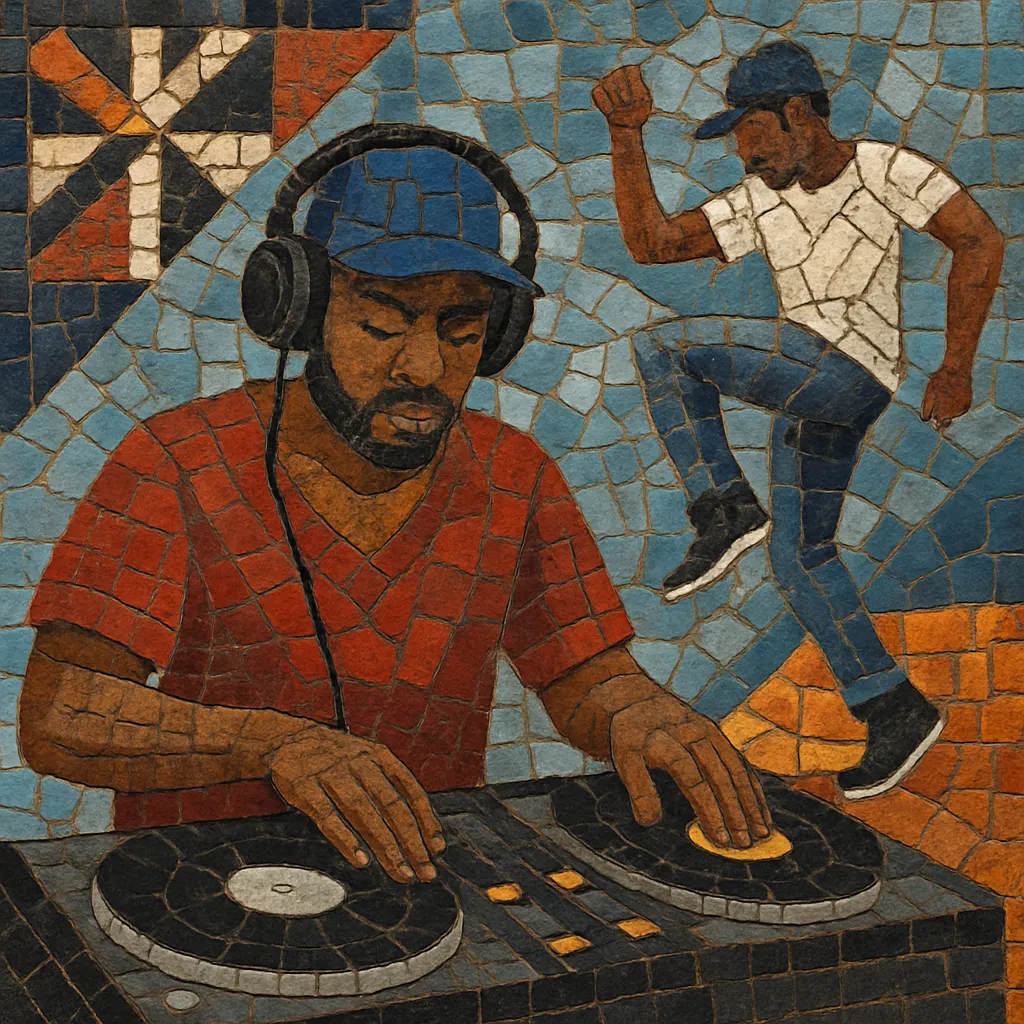
Baltimore club (often shortened to Bmore club) is a high‑energy, loop‑driven dance music that fuses the drum programming and four‑on‑the‑floor insistence of house with the chopped breaks, vocal call‑and‑response, and swagger of hip hop.
Typically hovering around 125–135 BPM (most commonly ~130), it relies on hard, syncopated kick patterns, snappy snares and claps, and rapid‑fire sample edits. Iconic breaks like Lyn Collins’ "Think (About It)" and Gaz’s "Sing Sing" are frequently chopped into chant‑like hooks, while sirens, stabs, and party shouts drive its rowdy, club‑ready feel.
Born in Baltimore’s DJ culture and perfected on local radio and dance floors, the style prioritizes movement and repetition—short phrases, big drums, and unforgettable vocal loops designed for instantaneous crowd response.
Baltimore club emerged in the early 1990s from Baltimore, Maryland’s DJ and party circuit. Local pioneers blended Chicago house’s drum programming and DJ tools with hip hop’s breakbeats and chopped vocal aesthetics. Two break sources—Lyn Collins’ “Think (About It)” (via the “Yeah! Woo!” break) and Gaz’s “Sing Sing”—became the backbone for countless tracks. Early community hubs included the Paradox nightclub, 92Q radio mixes, and Unruly Records.
Key figures such as Scottie B, DJ Technics, Rod Lee, Dukeyman, and Debonair Samir established the template: ~130 BPM, pounding kicks, clipped snares, and minimal, looped vocals that work as chants for the dance floor.
Through the 2000s, the sound ruled Baltimore parties and radio mixes. K‑Swift’s on‑air presence and mixtapes were vital in mainstreaming the style locally. Producers like DJ Class, KW Griff, DJ Booman, and DJ Blaqstarr pushed the sound into national consciousness. Bloghouse‑era tastemakers and touring DJs (e.g., Hollertronix circles) exposed Bmore club to wider audiences, while tracks and remixes began appearing in eclectic sets alongside electro, house, and hip hop.
Baltimore club directly inspired regional variants—most prominently Jersey club—and informed Philly club’s vocabulary and the emergence of club‑rap hybrids. While streaming and social platforms helped Jersey and Philly scenes go viral, Bmore’s core remained active in Baltimore, with new producers carrying the torch and classic records maintaining dance‑floor relevance.
The genre’s DNA—130 BPM drums, chopped vocal mantras, and breakbeat grit—continues to shape East Coast club music, remix culture, and rap‑club fusions. Archival reissues, documentaries, and renewed DJ interest have highlighted Baltimore club’s foundational role in contemporary club sounds.

